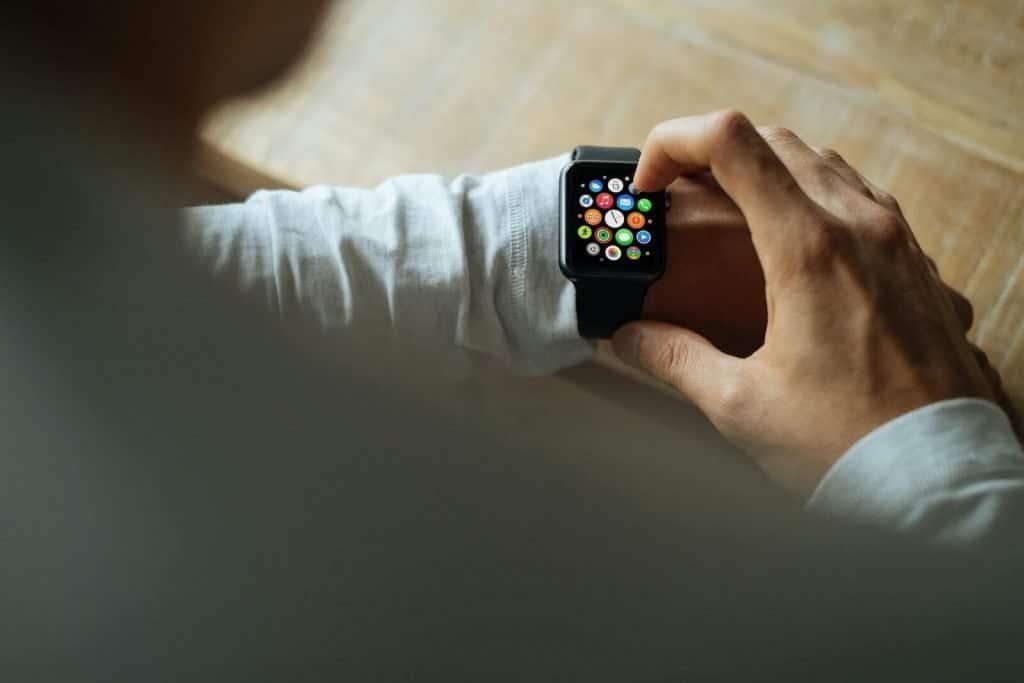The 2016 Disney animated movie Big Hero 6 won an Oscar for Best Animated Feature Film of the Year. It is a story about a plus-sized inflatable robot named Baymax and his prodigy Hiro Hamada. Together with a group of friends, they team up to form a band of high-tech heroes. Baymax is a nurse robot that continuously monitors Hiro Hamada’s health vitals and offers medical solutions. One can’t help but wonder whether the future portends a scenario where we all have nurse robots to monitor and advise us on our health. Is this just a pipe dream? Well, wearable devices in healthcare are all the rage right now and, with the frenetic pace of development, such a future may not be far-fetched at all.
Table of Contents
ToggleWhat are Wearable Health Devices?
The name says it all; wearable medical devices come with biosensors. They can be watches, bracelets, headbands, skin patches, waist-worn, or clothing. Wearables in healthcare have become extremely popular. Just look at the market demand for the Apple Watch, Fitbit, Nike+, and other wearable health technologies.
According to Precedence Research, the value of the wearable health devices market is projected to grow from $14.44 billion in 2019 to $89.45 billion by 2027. The increased awareness for healthy lifestyles is fuelling this growth.
Whilst wearable health technologies are interesting innovations, they aren’t exactly innovations. Spectacles are some of the earliest wearable health technologies. Bottom-line is that the history of wearable technology in healthcare demonstrates how the impossible becomes possible.
Examples of Wearable Devices in Healthcare
According to a recent study, over 80 percent of people are willing to use wearable health devices. Below are some of the most popular in the market.
- Fitness Trackers: These are the original wearable devices in healthcare. They are also the simplest to use and come as wristbands or bracelets equipped with a sensor that collects biodata as a user engages in physical exercise. The data is then synced using a wireless connection or Bluetooth to a mobile application, and the cloud. The mobile and cloud dashboard provides health and fitness recommendations based on the data collected.
- Smart Health Watches: Smart health watches are more than just trackers. In addition to being health trackers, they also offer many of the functions offered by a smartwatch such as checking email, date and time, SMS, read notifications, and make phone calls. Essentially a user can remain connected while working out without having to carry their smartphone with them.
- ECG Monitors: This technology is on the bleeding edge of consumer electronics. This gadget is head and shoulders above smart health watches due to its ability to measure electrocardiograms – the record of a human’s heartbeat generated by electrocardiography. ECG Monitors detect atrial fibrillation, an irregular rapid heart rate caused by chaotic electrical signals in the two upper chambers of the heart.
- Blood Pressure Monitors: In 2019, Omron launched the world’s first blood pressure monitor. Though it resembles a typical smartwatch, it is equipped with a miniature oscillometric blood pressure monitor to measure the wearer’s blood pressure. It can also detect steps walked, distance, and calories burned.
- Biosensors: These come as adhesive sensors or wearable clothing. This allows people to move around while metrics on their heart rate, respiration, temperature, and other parameters are collected. This technology has been hailed as having far-reaching implications for the prevention of chronic illnesses, and care management of the chronically ill.
(Image source: National Institutes of Health)
Benefits of Wearable Devices in Healthcare
Wearable technology in healthcare has indeed had a tremendous impact on the health and fitness industry. Let’s take a closer look at the benefits of wearable technology.
Empowering people
Wearable devices in healthcare have empowered people to proactively monitor their health. The metrics collected by these devices provide people with key insights into their health. Wearable devices are empowering people to develop a more responsible approach to their lives.
New Mantra
Wearable devices in healthcare have made health and fitness the new mantra. It is indisputable that in the last decade or so, the health and fitness industry has exploded. Living healthy is fashionable and adorning a tracker from Fitbit, Nike, and Apple is a fashion statement.
Stress Management
The fast pace of modern lifestyles is stressful. The pressures of careers and businesses leave people with little time for rest and recuperation. As a result, people suffer from stress and stress induced illnesses. Wearable health devices help keep track of stress levels, beep to notify, and guide how to remain calm. For example, Pip, a wearable stress monitoring device with an accompanying mobile app lets users track and visualize their changing levels of stress.
Screening
One of the health benefits of wearable technology is its utility as screening tools. Many ideas of how this can be scaled to the national health level have been mooted. The implementation in this area is still in its infant stages but some working solutions are a sign of hope. The iTBra by Cyrcadia, an early detection device for breast cancer, is a wearable bra that’s currently in use in Asia. It works by detecting circadian temperature changes over time within the breast tissue. The data is silently uploaded to a central server for analysis and shared with health care providers. Many women do not recognize the early warning signs of breast cancer. The disease remains one of the most prevalent cancers around the world. With this new technology, women get free screening simply by purchasing the bra. More of this kind of wearable healthcare monitoring devices is bound to be a boon for doctors and chronically ill people.
Managing Specific Medical Conditions
In addition to screening, wearable devices in healthcare are used to manage specific health conditions. About half of all adults in the US who suffer from hypertension can benefit from blood pressure monitors. This is just one practical example of how people can use wearable health devices to manage specific medical conditions. Other examples include trackers to manage a weight loss program and nutrition counters to deal with specific nutritional deficiencies.
Future of Wearable Devices in Healthcare
Most wearables require smartphones and mobile apps to transfer and display data. The future of wearable devices in healthcare also portends a new age of mobile technology development.
We are also seeing a trend towards value-based care and from a reactionary to preventive care. Health care models are moving away from a fee-based approach. Providers are now increasingly being compensated based on positive outcomes. Insurance companies and healthcare providers are sharing the risk in this regard.
The massive uptake of wearable health devices has also forced insurers to take notice. The widespread use of wearable medical devices will revolutionize the medical insurance industry. With better data, medical insurance actuaries will be able to accurately predict losses and come up with better pricing models. This factor combined with a value-based care model will lead to a drop in premiums and as astounding as it may sound, greater profitability for insurers.
In the workplace, the new health and fitness mantra is good for business. Employees are healthier and take fewer sick days. Healthier employees are also more productive at work, and this is good for the bottom line.
As devices become more conventional, the number of users will continue to grow. When the number of users hits a critical mass, there are bound to be profound improvements in the overall societal health and massive healthcare savings.





